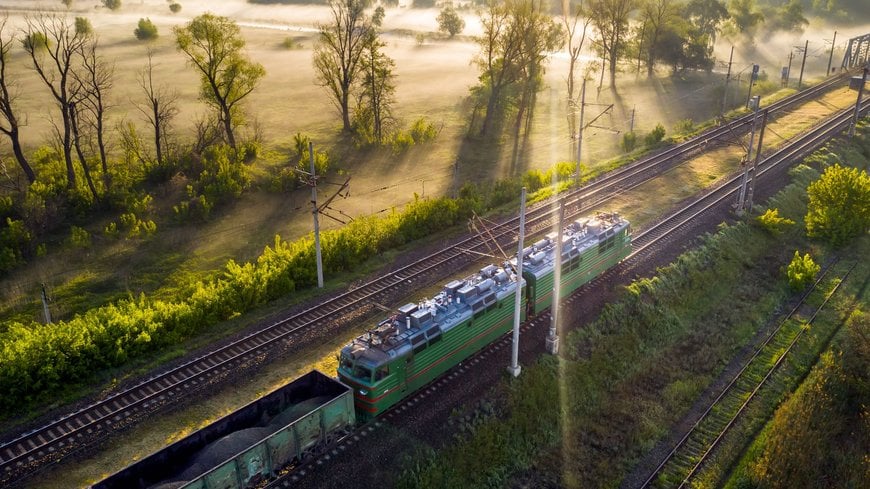railway-international.com
30
'21
Written on Modified on
The future of rail is digital: Knorr-Bremse bolsters digital portfolio for sustainable passenger and freight transportation
Like all industries, the transportation sector must play its part in significantly reducing carbon emissions

This transformative pressure is repositioning the rail industry at the heart of the mobility revolution as a mode of transportation that is inherently sustainable,” explains Dr. Jürgen Wilder, member of the Executive Board of Knorr-Bremse AG and responsible for the Rail Vehicle Systems division. “But for rail to fulfill its role as a future mobility backbone, it must become even more efficient, available, connected and flexible. Digital technologies are a key factor in accomplishing this mission.”
As a systems supplier to the rail market with a tradition stretching back more than 115 years, Knorr-Bremse is now the major driving force behind the development of a whole new generation of digital services in many different areas of passenger and freight transportation:
Condition-based maintenance (CBM): With this new solution from Knorr-Bremse, data can be generated for braking systems, entrance systems, HVAC systems and other subsystems, and immediately subjected to smart, algorithmic analysis. In turn, this enables high-precision monitoring of the condition of safety- and function-critical subsystems, with the aim of making train maintenance more flexible, proactive, and cost-efficient. For example, the CBM early-warning system is capable of informing operators that a door still has a guaranteed number of opening and closing cycles left before potential failure so they can schedule component replacement in advance. In short, the technology helps train manufacturers and operators to optimize fleet life-cycle costs while ensuring that more vehicles are available for passenger and freight transportation more of the time.
Digital freight train: Digital freight trains are regarded as enablers, increasing the transport capacity, process efficiency and availability of freight transportation services. Europe’s stated target of increasing the share of rail freight traffic from its current level of 18% to over 30% of total freight traffic by 2030 can only be achieved by providing attractive rail freight services. Knorr-Bremse is developing digital solutions for smart, automation-enabled freight trains at multiple levels: railcar, train, and fleet.
At railcar level, development activities are focused on four key areas: Digital Automatic Couplers (DAC); smart communication solutions; connecting these solutions to onboard energy management systems, and a new electropneumatic braking and/or automation system for performing a wide variety of new functions.
At train level, Knorr-Bremse is helping rail operators to automate the operational processes for preparing and assembling trains. For example, brake testing – previously a time-consuming manual operation which rail crews had to carry out before every journey – is now automatically performed by digital systems in the driver’s cab, making a huge contribution to improved time efficiency.
At fleet level, Knorr-Bremse is rapidly developing features for automating fleet operators’ maintenance, service and operational processes. These include, for example, real-time condition monitoring solutions, driver assistance systems for optimizing energy consumption such as LEADER©, and sensor systems for detecting obstacles and surroundings for more efficient, safer shunting and freight transportation.
Cybersecurity: Today’s trains are already traveling computers connected to operators’ rail management networks. But as connectivity grows, so too does the potential risk of hacker attacks. Using artificial intelligence with anomaly detection to act like a protective shield, the system-level cybersecurity mechanisms devised by Knorr-Bremse Group subsidiary Selectron span multiple integrated layers to ward off external attacks. Step by step, Knorr-Bremse is incorporating the company’s Threat Detect Solution (TDS) into the software that controls braking, entrance and HVAC systems, as well as other subsystems, while ensuring that it complies with all relevant IT security and data protection legislation such as the EU Directive on Network and Information Security (NIS). Acting as both probe and sensor, TDS constantly monitors all data flows and reports any unusual movements to the Rail Security Operations Center (Rail SOC) so that potential threats can be identified in good time.
Environment observation and obstacle detection: The key challenges are the ability to “see” further ahead, to intelligently recognize surroundings, and to react more quickly. In the quest for autonomous train operation, sensor-based systems combined with real time artificial intelligence designed to detect and classify objects (and obstacles) in its surroundings are key to improve safety and operating efficiency. This applies to main line, urban transit services, and the shunting of freight locomotives. Together with Israeli tech company Rail Vision, which developed an electro-optical system with AI and deep learning capabilities, Knorr-Bremse is a prime mover in delivering environment observation and obstacle detection solutions that can see up to two kilometers ahead. For example, In a current functional prototyping project for Swiss operator SBB Cargo, Knorr-Bremse and Rail Vision have fitted a locomotive with Rail Vision’s system to verify the ability to improve safety and efficiency for rail crews during shunting operations.
www.knorr-bremse.com

